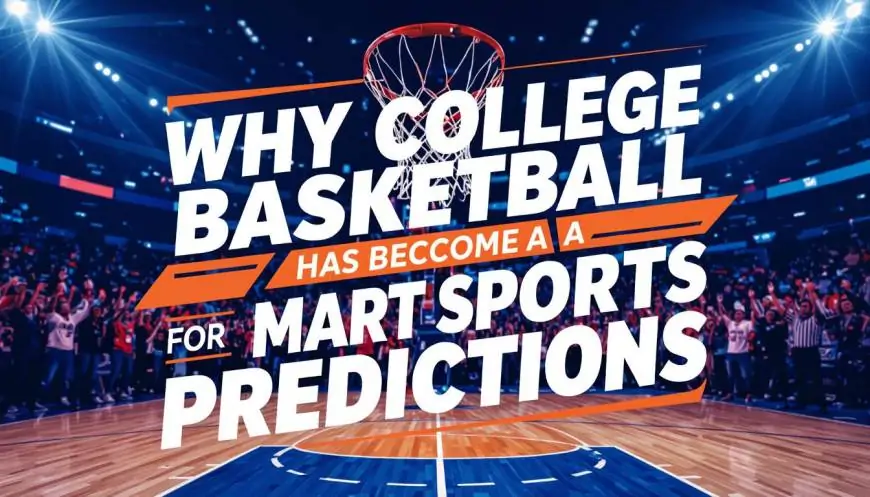College basketball has long captured the hearts of fans with its fast-paced action, intense rivalries, and unpredictable upsets. But over the last decade, it’s also become a magnet for data-driven sports predictions. From fans filling out March Madness brackets to analysts crunching numbers behind the scenes, college hoops is now one of the most analyzed sports in the game.
A big reason for this? The sheer volume of games, player variability, and emerging data tools that allow smarter, more strategic forecasting. Platforms that offer college basketball predictions now attract everyone from casual fans to die-hard data enthusiasts looking to better understand how the game unfolds.
Why College Basketball Attracts Data Fans
Unlike professional leagues that feature a limited number of teams, NCAA Division I basketball has over 350 schools competing each season. That means hundreds of games every week, each filled with unpredictable moments. This variety opens the door for deeper pattern recognition and statistical modeling.
College basketball also features shorter careers. Players often stay with a program for just one or two years before moving on. This turnover creates more opportunity for predictive modeling since each season introduces new combinations of talent, coaching styles, and play strategies.
These factors make it an ideal sport for analysts who thrive on fresh data sets and changing conditions—hallmarks of effective prediction environments.
The Role of Predictive Tools in Fan Engagement
Smart predictions aren’t just for industry insiders anymore. Fans now have access to tools that were once reserved for analysts and betting professionals. Websites offer live probabilities, matchup breakdowns, and player performance projections to enhance the fan experience.
The goal isn’t just about knowing who might win. It’s about diving deeper into why one team may outperform another. Whether you’re a bracket junkie in March or a season-long supporter, prediction tools now play a key role in how fans watch and interpret each game.
According to Statista, the NCAA March Madness tournament brought in over 10 million viewers per game in recent years, many of whom follow games not just with passion—but with predictions in hand.
What Makes NCAAB Unique for Forecasting
Several elements set college basketball apart from other sports when it comes to making predictions:
1. Team Volume = More Data
More teams mean more matchups, and more matchups mean more variables to analyze. This wide scope gives prediction tools a rich environment to work with.
2. Unpredictable Player Development
College athletes grow quickly. A freshman who struggles in November might become a game-changer by March. This variability makes forecasting both challenging and rewarding.
3. Distinct Coaching Styles
With fewer games and younger players, coaching strategy has a stronger impact on outcomes compared to professional leagues. Analyzing past performance, game tempo, and system matchups becomes crucial.
The Rise of Smart Bracketology
March Madness has always encouraged fans to make predictions, but now those brackets are backed by real-time analytics. Fans can explore injury reports, team trends, strength of schedule, and even predictive win probabilities—all before picking a Final Four.
This access to data has leveled the playing field, making bracket challenges more about analysis than pure luck. Whether you’re in a 10-person office pool or competing nationally, those with the smartest insights now have a clearer edge.
Where the Future Is Headed
As predictive models become more refined, expect to see more machine learning, AI-generated forecasts, and real-time analytics integrated into how fans consume the sport. Some platforms even simulate matchups thousands of times to find statistical edges.
But it’s not just about making better guesses. These tools enhance how we understand college basketball—from player matchups to how tempo affects scoring. For fans who love both stats and strategy, this evolution has made the sport even more engaging.
College basketball is no longer just about the buzzer beaters and Cinderella stories. It’s also about strategy, analysis, and making sense of the numbers. With platforms offering in-depth college basketball predictions, the game has become as intellectually stimulating as it is entertaining.









